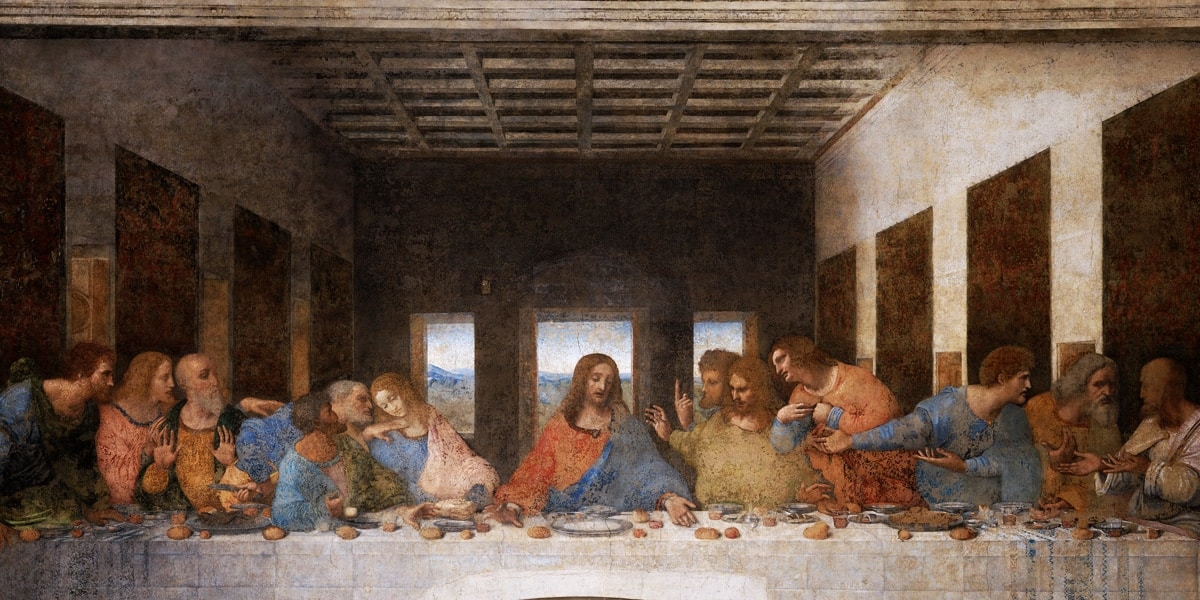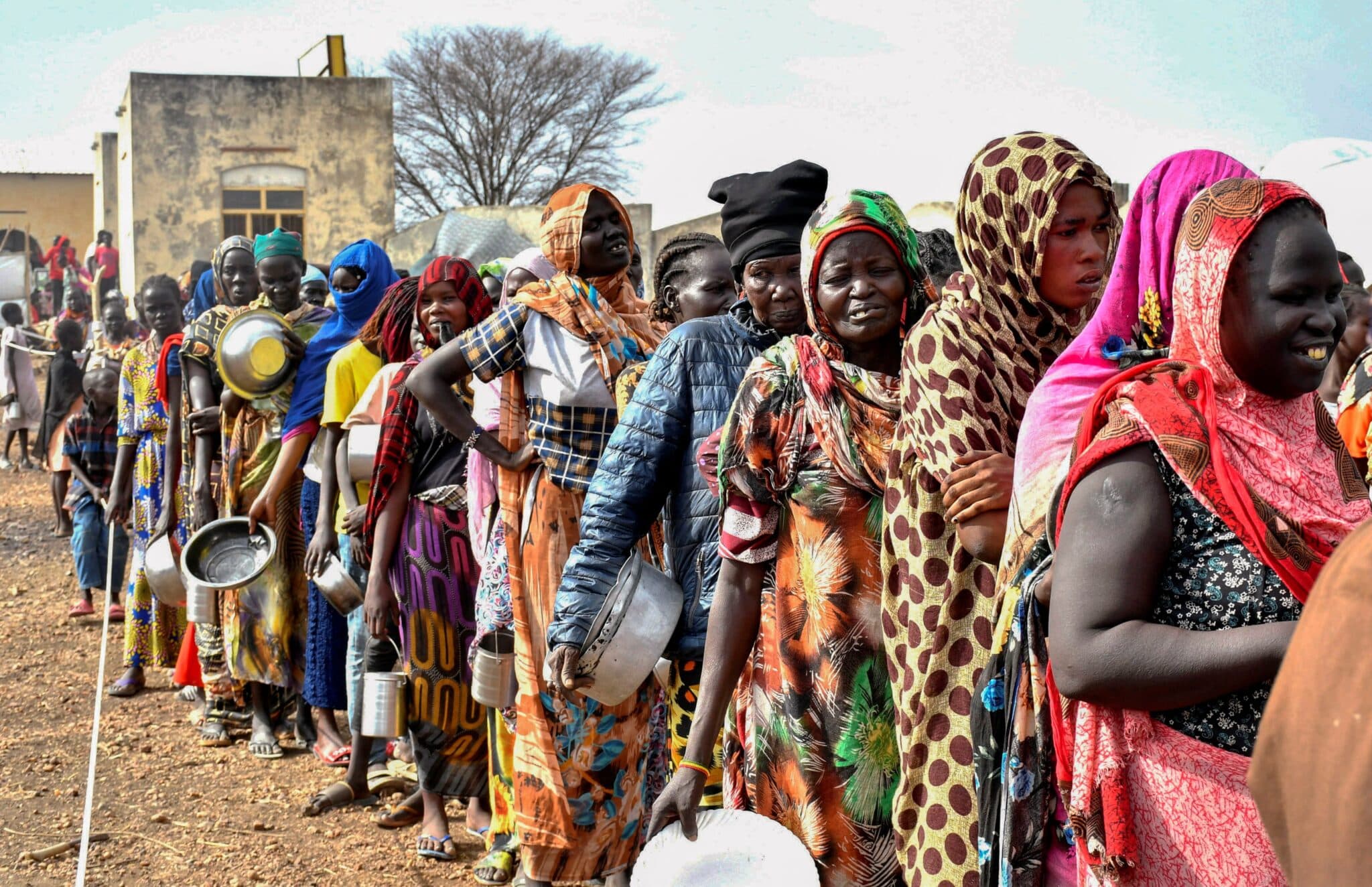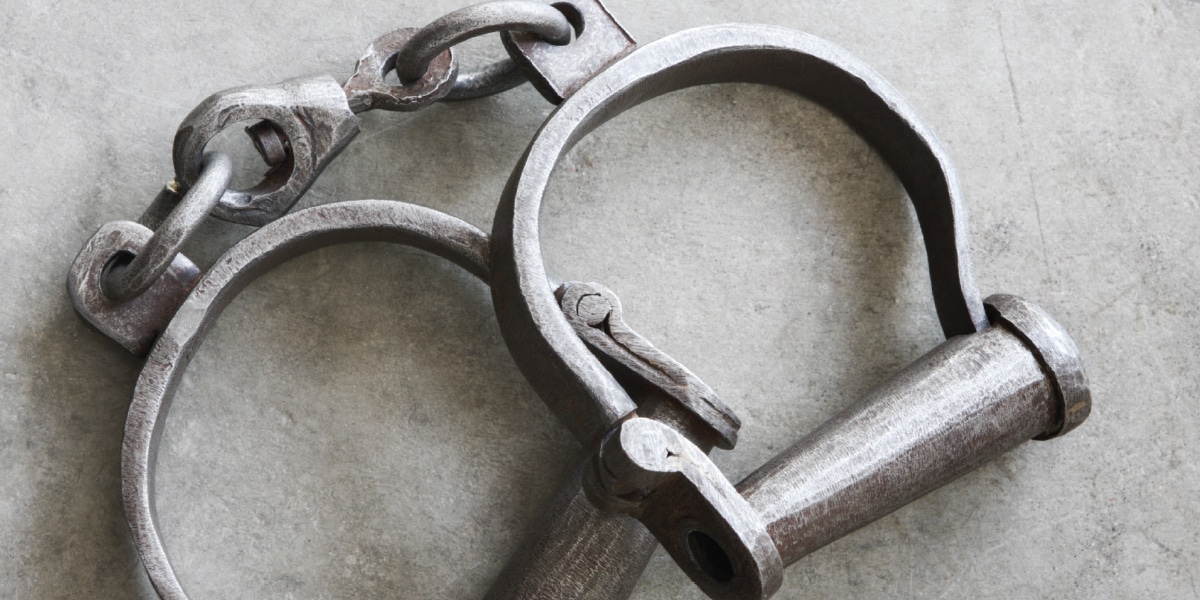This writer and chaplain guides us through one of the holiest sites in Church history.
The Upper Room, also known as the Cenacle, is located in the southern part of the Old City of Jerusalem on Mount Zion, and is perhaps best known as the traditional site of the Last Supper since the fourth century AD. The current structure of the room dates approximately from the fourteenth century, which accounts for the existing Gothic-era columns.
According to tradition, this is where the apostles stayed when they were in Jerusalem. It is where the Last Supper took place. The Cenacle is where Jesus washed his disciples’ feet (John 13:1–20), which symbolizes the ministry of loving service. It is where the concept of a loving friendship with Jesus was introduced, as set forth in John’s Last Supper discourses (John 14—16), and gave the apostles a glimpse into the beautiful prayer life of Jesus, sometimes known as the “high priestly prayer,” recorded in John 17. It is the place where the disciples gathered in fear after the death of Jesus and prayed, with Mary, for the coming of the Holy Spirit (John 20:19–23).
By tradition, this is the same room where Jesus appeared, both before and after the resurrection. It was here that the Risen One made visible his wounds to see and touch, and the room where the faith of Thomas emerged. It is where the Risen Lord breathed on them the Holy Spirit “on the evening of that first day of the week” (John 20:19). It is where tongues of fire appeared to them on Pentecost and “they were all filled with the holy Spirit” (Acts 2:4). That event marks the birthday of the Church in the presence of our Blessed Mother (Acts 1:14). It is from there that the apostles went forth with boldness sharing the Good News.
For all these reasons, the Upper Room is a much sought-after destination for Christians who travel on pilgrimage to the Holy Land. And yet, because it also has great spiritual significance for both Jews and Muslims, the Cenacle is ever at the center of political controversy. Normally only “visits” are allowed to this place because this present structure is contested and claimed by both Israelis and Muslims. Muslims consider it to be a mosque and the Israelis consider the lower level of this structure to be the Tomb of David, which has belonged to the Israelis since 1948. On some occasions, Christians are permitted to celebrate Mass in the Upper Room, but it is not common and is done only with permission.
Even so, the importance of this holy space never ends. In May 2014, Pope Francis visited the Holy Land and was permitted to celebrate Mass in the Cenacle during his three-day pilgrimage. As if to acknowledge this privilege, the pope in his homily said: “It is a great gift that the Lord has given us by bringing us together here in the Upper Room for the celebration of the Eucharist” (May 26, 2014).
Perhaps it is because the apostles spent so much time with Christ in that holy place that we see most clearly their various personalities when they are gathered here, particularly at the Last Supper. Tellingly, it was here that Jesus predicted Judas’s betrayal and Peter’s denial (John 13:21–30, 36–38), and here exposed Thomas’s doubt (John 20:24– 29). The humanity of each apostle is vibrantly portrayed in the Upper Room, giving us a glimpse into our own hearts and nature, as well as into the unrelenting love of Jesus Christ for his followers. It was also in this room from which, filled with the Holy Spirit, the apostles would ultimately leave to change the world—your world and mine. For as we hear in Psalm 104:30: “Send forth your spirit, they are created, / and you renew the face of the earth.”
Despite the tensions over its religious significance, the events that took place in the Upper Room prior to and immediately after the crucifixion of Christ, and in the days following his Resurrection, can never be undone or forgotten. The fruits of Jesus’s life and ministry, as witnessed in the precious moments in the Upper Room documented in Scripture, continue in and through the Church. In this humble space, the most important room in all of Christendom, where Jesus set a remarkable precedent of faith and service, we were given a new understanding of God’s love and the revolutionary power of the Holy Spirit was unleashed.
Encountering God In Our Upper Room
My appreciation for the importance of this holy space, considered by some to be the first Christian church, began with a pilgrimage I led to the Holy Land a number of years ago. Our time in that room made a significant impression on me and on all of my pilgrims.
And yet, one need not physically go to the Cenacle to be aware of its spiritual importance. What happened in that Upper Room in Jerusalem almost two millennia ago, both before and after Christ’s resurrection, continues to have significant and grace-filled personal effects on every baptized Christian. The events that took place there continue to rest at the heart of our faith today.
While the Cenacle is a real place, it is also so much more than a simple room or a concrete historical location in Jerusalem. It is here that the apostles retreated from the world to be with Jesus, here they listened with rapt attention as he revealed to them the mysteries that they would one day pass on to thousands of others. It was here, above all, that they were equipped to do the work for which they had been called.
And in that sense, one need not travel to the Holy Land to encounter Christ. Inside each of us is an “upper room,” where we experience the living presence of God. Wherever we are, whenever we take the time to find and speak and listen to God, we can experience his life-giving, sacramental, and transformative presence.
As we ponder what happened out of love for us in that Upper Room at Jerusalem, we begin to experience that this room is an icon of the Church itself. The graces that originated in the events associated with that sacred place continue to transform us through the life of the Church today, creating for us a spiritual home where souls are welcomed and nurtured. Just like the apostles, each one of us needs to spend some time in the upper room in our own hearts, drawing close to God in prayer.
Your upper room might be in your office, your car, or a quiet nook in your house, a place where God speaks to you anew each day. Others experience these Upper Room moments at Mass, or in Eucharistic Adoration.
Three Events In the Upper Room
In that Upper Room during his 2014 visit to Jerusalem, Pope Francis’s homily highlighted three major events that took place in that sacred space: “Here, where Jesus shared the Last Supper with the apostles; where, after his resurrection, he appeared in their midst; where the Holy Spirit descended with power upon Mary and the disciples, here the Church was born, and she was born to go forth.”
And so, following the pope’s teaching, there are three events to study:
- The Last Supper
- The post-Resurrection appearances of the Risen Lord
- Pentecost and its effects on the apostles and early Church
From our perspective almost two millennia later, in these three points in history we see an image of a fruitful Church in that room and from that room. The life of our Church today continues to be reflective of what happened there.
Experiencing the Life of the Church
The events in the Upper Room reveal a great deal about the way we experience the life of the Church. We experience that life…
In sacramental graces. In the Upper Room, Jesus instituted three specific sacraments—the Eucharist, holy orders, and penance. A fourth sacrament (confirmation) has its origin in the imposition of hands that, in a certain way, perpetuates the grace of Pentecost that took place in the Upper Room by the coming of the Holy Spirit. The graces from these sacraments continue to strengthen and sustain the Church in every age.
In service. In the washing of feet on Holy Thursday, we catch a glimpse of the “servant leadership” Christ taught his disciples to practice. “But Jesus summoned them and said, ‘You know that the rulers of the Gentiles lord it over them.… But it shall not be so among you. Rather, whoever wishes to be great among you shall be your servant; whoever wishes to be first among you shall be your slave’” (Matthew 20:25–27).
In prayer. In his high priestly prayer, Jesus prayed not only for his immediate followers but for all those who would follow: “I pray not only for them, but also for those who will believe in me through their word, so that they may all be one, as you, Father, are in me and I in you, that they also may be in us, that the world may believe that you sent me” (John 17:20–21).
In the profession of Easter faith. As the darkness of Good Friday gives way to the jubilant “Alleluia” of Easter, we profess our faith with all the joy of St. Thomas in seeing the Risen Lord. “My Lord and my God!” (John 20:28).
In the outpouring of the gifts of the Spirit. In the sacraments, particularly at baptism and again at confirmation, the scent of chrism fills our senses with inexplicable joy, just as the followers of Jesus were overwhelmed by the coming of the Holy Spirit at Pentecost. Listen to Peter, as he proclaims the fulfillment of Joel’s prophecy: “‘It will come to pass in the last days,’ God says, ‘that I will pour out a portion of my spirit upon all flesh…and it shall be that everyone shall be saved who calls on the name of the Lord’” (Acts 2:17, 21).
In the presence of Mary. Quitting that Upper Room and following her Son as closely as possible, sharing in his suffering as only a mother could, Mary is the icon of Mother Church. Listen as Jesus speaks to her and the “beloved disciple” from the cross: “When Jesus saw his mother and the disciple there whom he loved, he said to his mother, ‘Woman, behold, your son.’ Then he said to the disciple, ‘Behold, your mother.’ And from that hour the disciple took her into his home” (John 19:26–27).
In apostolic zeal. The fire that fell at Pentecost did not remain in that Upper Room, but continued to sustain the missionary nature of the Church to the present day. As Paul and Barnabas proclaimed the Gospel to the Gentiles: “For so the Lord has commanded us, ‘I have made you a light to the Gentiles, that you may be an instrument of salvation to the ends of the earth’” (Acts 13:47).
As Pope Francis said, speaking from the Cenacle on May 26, 2014: “How much love and goodness has flowed from the Upper Room! How much charity has gone forth from here, like a river from its source, beginning as a stream and then expanding and becoming a great torrent. All the saints drew from this source; and hence the great river of the Church’s holiness continues to flow: from the heart of Christ, from the Eucharist and from the Holy Spirit.”









1 thought on “The Upper Room in Jerusalem”
If the room were Jesus and the follower celebrated the last supper is the holiest most important for Christians, why these is no sign of this special and holy occasion anywhere in the surrounding in this room
Comments are closed.